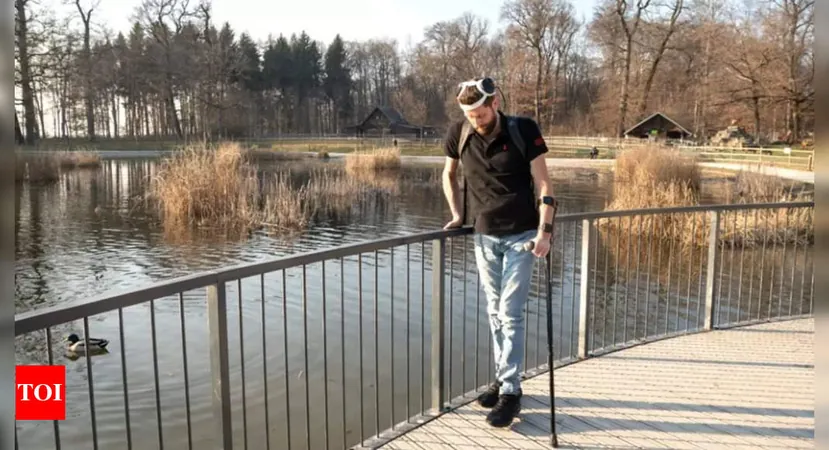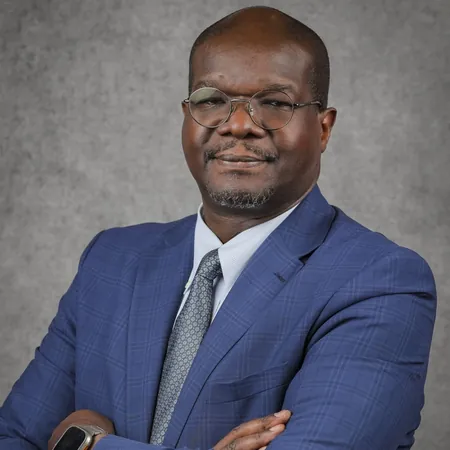
Revolutionary Stem Cell Treatment in Japan Allows Paralyzed Man to Stand Again!
2025-04-02
Author: Rajesh
In a groundbreaking development that could change the landscape of regenerative medicine, a Japanese man paralyzed from the neck down for years has achieved the extraordinary milestone of standing unaided. This remarkable feat is the result of a pioneering clinical trial led by stem-cell scientist Hideyuki Okano at Keio University, marking a beacon of hope for individuals grappling with spinal cord injuries.
The trial, which involved four participants with severe paralysis due to spinal cord damage, introduced an innovative therapeutic approach using reprogrammed neural stem cells to reverse the effects of their injuries. This technique has the potential to regenerate damaged spinal tissues and restore crucial motor functions.
A New Dawn for Paralysis Recovery
Among the participants, one man experienced a miraculous turnaround: following an injection of neural stem cells directly into his injury site, he regained the ability to stand independently. This astonishing result signifies a monumental step forward in the quest to revive lost mobility for those affected by spinal injuries. Another participant was able to regain function in both arms and legs, showcasing the varying responses to the treatment across different individuals.
However, not all participants saw the same level of success; two individuals did not experience significant improvements, prompting questions about the overall effectiveness and consistency of the treatment. Experts are advocating for a larger scope of trials to better assess the true impact of this revolutionary treatment.
Understanding the Science Behind the Breakthrough
The clinical trial utilized induced pluripotent stem (iPS) cells, which are derived from reprogrammed normal cells. Converted into early-stage nerve cells, these iPS cells were subsequently implanted into the damaged spinal areas of the patients. Over a series of injections totaling two million cells, these treatments were administered between 2021 and 2023.
To prevent the body from rejecting the transplanted cells, participants were given immune-suppressing medication for six months. Remarkably, one year post-treatment, neither of the participants who regained mobility experienced any major side effects—a promising indication for the safety of the approach.
Challenges Ahead: The Survival Rate of Transplanted Cells
Despite the small scale of the trial, which has not yet undergone peer review, the results highlighted a significant shift in understanding the potential of stem cell therapies for treating spinal injuries. Nevertheless, experts caution that these improvements may not solely be attributed to the stem cell treatment and emphasize the need for more extensive clinical trials to ascertain definitive results.
A critical area of ongoing research revolves around the survival rate of the transplanted cells. It is well-documented that a majority of injected cells perish within hours after transplantation. Interestingly, Okano's team believes their findings through imaging tests suggest that some of the iPS cells did survive and may play a role in the patients’ recovery process.
As this pioneering trial steals the spotlight, the scientific community eagerly anticipates further investigations that could solidify the promise of stem cell treatments in offering new life to those with paralysis. The door has opened to a future where the impossible may become possible again, leading to lives transformed beyond what has been seen before. Stay tuned for more groundbreaking developments!



 Brasil (PT)
Brasil (PT)
 Canada (EN)
Canada (EN)
 Chile (ES)
Chile (ES)
 Česko (CS)
Česko (CS)
 대한민국 (KO)
대한민국 (KO)
 España (ES)
España (ES)
 France (FR)
France (FR)
 Hong Kong (EN)
Hong Kong (EN)
 Italia (IT)
Italia (IT)
 日本 (JA)
日本 (JA)
 Magyarország (HU)
Magyarország (HU)
 Norge (NO)
Norge (NO)
 Polska (PL)
Polska (PL)
 Schweiz (DE)
Schweiz (DE)
 Singapore (EN)
Singapore (EN)
 Sverige (SV)
Sverige (SV)
 Suomi (FI)
Suomi (FI)
 Türkiye (TR)
Türkiye (TR)
 الإمارات العربية المتحدة (AR)
الإمارات العربية المتحدة (AR)